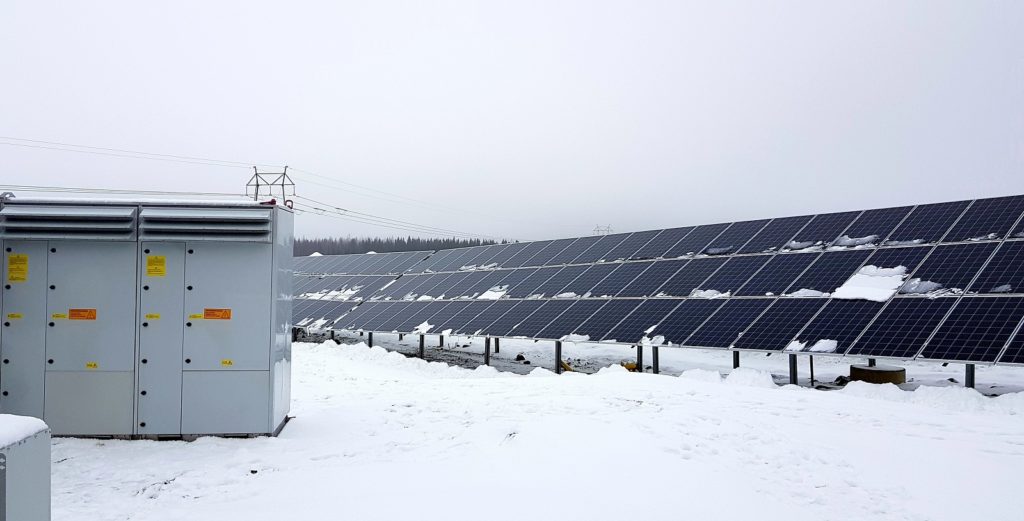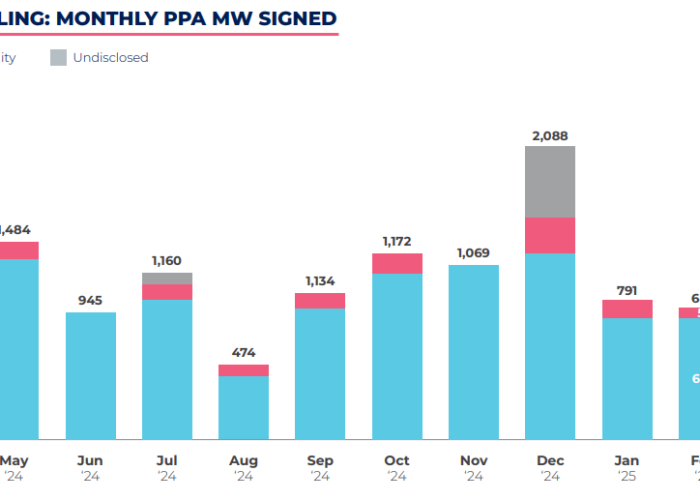
Last month the EU announced its inaugural cross-border solar PV tender in the form of a request for proposals (RFP) for 400MW worth of projects to be deployed in Finland, but to be financed by Luxembourg.
The RFP is part of the Renewable Energy Financing Mechanism (RENFM), which came into force in September 2020 and is only now getting up and running. This article will explain the cross-border tenders in more detail and explore what they might look like and where they might sit in the mix of the European solar market.
Unlock unlimited access for 12 whole months of distinctive global analysis
Photovoltaics International is now included.
- Regular insight and analysis of the industry’s biggest developments
- In-depth interviews with the industry’s leading figures
- Unlimited digital access to the PV Tech Power journal catalogue
- Unlimited digital access to the Photovoltaics International journal catalogue
- Access to more than 1,000 technical papers
- Discounts on Solar Media’s portfolio of events, in-person and virtual
Or continue reading this article for free
The European Commission plans ultimately to run an ‘expression of interest’ call for EU countries every year, which will result in a call for a cross-border tender if there is enough interest from member states and the proposals and desires of the participating countries line up. In effect, the Commission is positioning itself as a facilitator for the bids, leaving the details, demand and supply up to the market that develops – or doesn’t, as the case may be.
‘Participating countries’ include both ‘host’ and ‘contributing’ nations; those where the projects are built and operated and those who provide the funding. The money will go into a collective fund – the RENFM – to be distributed between projects and countries whose preferences align enough to issue a tender.
The financial benefits of the projects, in the form of renewable energy statistics, will be split 80/20 between the contributing and host nation. In the case of the first tender, once projects are assigned Luxembourg will be credited with 80% of the production certificates and data, which will effectively count towards its ‘decarbonisation’, whilst Finland will be credited with 20%.
The programme will grow based on the interest from contributing countries; the larger the pool of countries involved, the larger the tenders can be. Currently, a 400MW tender is significantly smaller than many other European countries’ individual state auctions.
The Commission intends the scheme to be another way to roll out renewables as quickly as possible, following its target of deploying 350GW of solar PV by the end of 2025 and 750GW by the end of 2030. The first deadline is likely too close to be significantly impacted by RENFM cross-border tenders, but they could start seeing meaningful capacities in the second half of the decade.
The RENFM financing is apparently designed to compliment and exist alongside national tenders, offering an alternative in terms of financial support, location or technology. Given the nature of the programme, it will predominantly provide investment aid for building new overall renewables capacity, rather than operating aid based on producing actual units of renewable energy which many national tenders do.
Finally, future tenders will be based on the competitiveness of the prices offered per kWh, with the logical extension that markets and regions with the cheapest conditions for generating power and building projects will be awarded the most tenders.
Land is at a premium in Europe, particularly in the wealthier central countries; on the EU’s Eurostat website a graph shows that the further East (and South) you get, into countries like Croatia, Slovakia, Lithuania, Bulgaria, and Latvia, the cheaper the average price of arable land per hectare. The Netherlands and Luxembourg are the two most expensive countries that the website lists (data from Germany and some other countries was unavailable).
A country putting money into the RENFM to benefit from its renewable energy statistics will likely see more bang for their buck in a country where land – and labour – are cheaper, as will solar companies that take up the contracts from the RENFM. In principle this doesn’t have to be a bad thing, and the Commission seems to have left the location and concentration of potential RENFM projects up to the discretion of the market, but that same logic means that a country like the Netherlands or Germany would – on a statistical basis – be able to fulfil its renewable energy quotas more cheaply and without using its own land or upsetting its own communities by outsourcing its solar to the cheaper parts of Europe.
From the renewable energy industry perspective this is a good thing as it opens up quicker and more affordable avenues for deployment and reaching the EU’s solar targets. In comments to PV Tech Premium, Jonathan Bonadio, senior policy advisor at solar trade body SolarPower Europe said: “cross-border auctions could increase competitiveness of renewable projects by encouraging competition among a larger pool of bidders. This can potentially lead to lower prices and stimulate the European market for solar.”
He continued: “If well designed, cross-border tenders could also push EU Member States to harmonise their administrative procedures, and thus create the right enabling framework for utility-scale solar PV.
“On the contrary, lack of harmonisation of administrative procedures and diverse national regulatory frameworks can hamper the development of cross-border projects, and hinder their efficiency. We should be aware that EU countries only have an indicative target for cross-border projects.”
As it stands the RENFM tenders are significantly smaller than the larger national tenders across the EU. Germany’s most recent national tender bid was for 1.95GW of ground-mounted PV and was oversubscribed by almost 50%. Bonadio said: “‘Big players’ like Poland or Romania, which are already or soon-to-be gigawatt-markets, i.e. markets with more than 1GW capacity addition per year, could be great candidates for installations of renewables ‘on behalf’ of other Member States. Particularly in smaller Member States, or Member States with financial means but limited renewable potential. But the actual installations of solar projects will also depend on other factors such as administration or national renewable policies.”
There isn’t a guarantee that the bigger players in the EU solar market will get involved in the RENFM, which could leave it as a sideline project for smaller capacities. On the flip side, it could allow smaller countries with lesser tenders to deploy larger capacities.
On the subject of smaller markets, a good example may be Albania. Part of the Balkans, it is one of the smallest EU solar markets and one of the bloc’s poorest countries. In April it announced plans to tender up to 300MW of solar PV by June as part of its goal to become a net exporter of renewable energy by 2030. This auction was supported by the European Bank for Reconstruction and Development and money from the Swiss government.
On one hand, RENFM projects could inflate the Albanian solar market by opening up more financing and deployment opportunities that may not be there otherwise. The commission said that the scheme will allow countries to appeal for specific tenders based on location, technology or capacity that may not be covered by standard tenders.
On the other, there are potential concerns in the principle of allowing wealthier states to use less wealthy ones with more land resources as mines for their renewable energy statistics. It’s unclear whether the statistics would need to correspond to any concrete decarbonisation in the funding nation, or whether it essentially accounts to a form of carbon offsetting.
The host country benefits from the infrastructure, investment and job creation, but perhaps more clarification is needed in terms of the energy statistics and concrete, on-the-ground actions to prevent a (very cynical) hypothetical scenario where emerging EU markets become the solar parking lots for wealthier countries to bolster their on-paper renewables credit.
Bonadio explained further: “While a situation where the tendering country has a higher GDP per capita than the country of installation of renewables remains possible, the design of the support mechanism should be done in a way where the ‘host’ country can also reap the benefits of the renewable installation. Concretely, this means involving local population, local developers, and potentially allowing local ownership of the renewable facility.”
All of this being said, the electrons aren’t being exported back to the host country. In the tender that was released last month, Finland will use the electricity produced as well as benefiting from the jobs, investment and other support that comes with a new project. Luxembourg has little in the way of spare land, so it can financially contribute to the EU-wide renewables targets from a distance.
“Cross-border projects could also open new markets for solar, by creating projects in member states with a low penetration rate of solar. One good example on this matter would be the Luxembourg-Finland joint project, where the ‘host’ country, Finland, has so far limited solar capacities,” said Bonadio.
It remains to be seen how much interest the scheme will generate, but it potentially offers an early-stage way of expanding renewable energy adoption, solving the dual problem of land price and availability and widening the net of countries deploying and benefitting from renewables.







